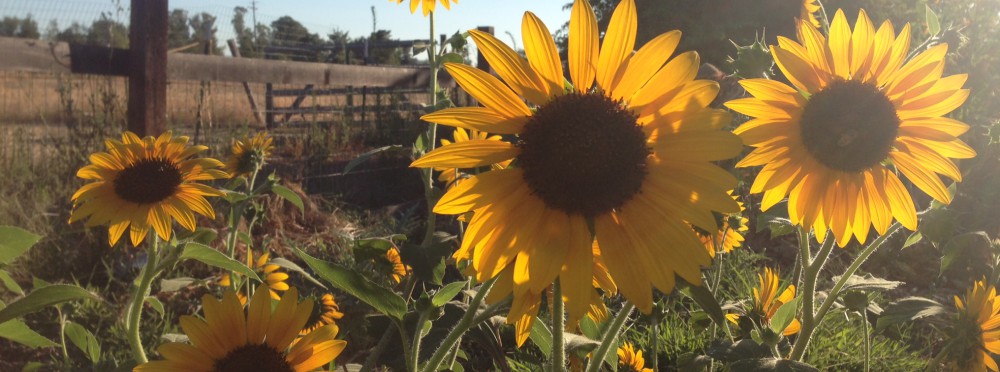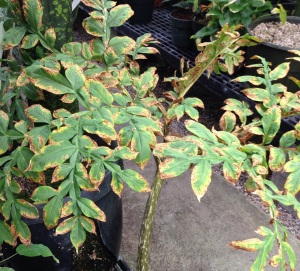“Step away from the plants” is a quote I have uttered many times to people regarding their plants. I first used this on a repeat customer, at a nursery I worked, who would bring in a leaf from his Pittosporum…….EVERY week. I pictured him at home every morning fixating on every negative defect of this poor plant and freaking out about it. I wonder if he was married and if his wife suffered the same critique. After several weeks of telling him that the brown leaves were perfectly normal, I finally told him, “Step away from the plant.” This means if you are doing everything right for your plant do not look at it everyday, do not scrutinize it, do not freak out, do not count the number of brown spots.
We rely on our student workers and interns at the botanical conservatory to keep our plants looking tidy and clean. We train them for a full quarter but of course that is just a drop in the bucket to understanding plants. When we send them into the greenhouse to tidy up we say “remove brown, yellow and dying leaves” and we assume a lot of times they understand their task. It is not until afterwards, when we are looking at our completely defoliated staghorn ferns or our Monstera is left with a few pathetic new leaves that they indeed DID NOT understand. I encounter the same question a lot on “Good Day Sacramento” when people wonder why the leaves on their Alocasia or Peace Lily are turning brown. A simple way of explaining this is some plants have fewer, larger leaves while other plants have large numbers of small leaves — plants with large leaves put their energy into making a few leaves versus some plants like Ficus benjamina which produces an abundance of small leaves that are more expendable. Salts and fertilizers build up in the leaves resulting in brown tips and margins. Plant with large leaves that are fewer in number will generally persist longer than a plant with small leaves it seems more noticeable. Plus plant leaves simply age and hey, none of us look any BETTER with age.
The extreme example of this is Welwitschia mirabilis — an African plant that only has two leaves its whole life and in Africa, some of these plants are thought to be over 1,000 years old! It is perfectly normal for the tips of these leaves to be brown and dry. We have many in our collection and our oldest is from the late 1960’s. Every once in a while during training, we will forget to tell students to not prune the Welwitschia. We will walk in and have a freak out moment when we realize they have done exactly what we tell them to do with most plants – cut the brown tips off. Luckily, we have not suffered the same fate as at the UC Berkeley Botanical Garden. Garden legend has it that a volunteer cut back the entire two leaves of the Welwitschia based on the general consensus that leaves with brown edges should be removed. Yes, this is every horticulturalist’s nightmare!!! A large OOPS we have experienced is a student cutting down our Amorphophallus leaf. The corpse plant, for which we are most well known, produces one large leaf and like all bulb and bulb-like plants the foliage should be left to die down completely before being removed. Our good students, pruned “vigorously.” Honest mistake and…lesson learned.
There are so many other battles in your garden and in life that one must not scrutinize the small details but look at the broader scope of it all and decide when action and energy needs to be allocated (do like a leaf). And of course your biggest help in all of this is knowledge — how a plant grows, acts, and what its limits are. So when it comes to brown or dying leaves, remember these stories and “step away from the plant!”




